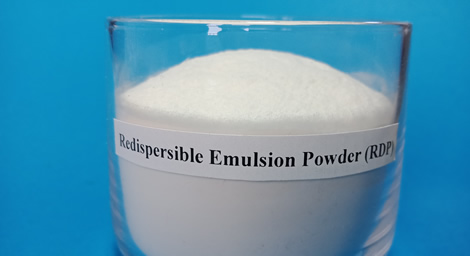Introduction:
Redispersible polymer powders (RDP) are polymer additives commonly used in construction materials, including mortars and concrete mixtures. These powders are produced through a spray drying process that converts liquid polymer into a free-flowing powder. The resulting RDP particles can be easily redispersed in water to form stable emulsions that provide unique properties to concrete mixtures.
Film-forming ability: RDP has film-forming properties and can form a flexible and sticky film on the concrete surface. The film enhances the adhesion and cohesion of the mortar, thereby increasing strength and durability.
Moisture Retention: RDP helps maintain moisture content within the mortar, preventing excessive evaporation during the curing process. This water-holding capacity helps improve construction performance and extend open time.
Flexibility: The flexibility imparted by RDP in concrete mixes reduces the risk of cracking, especially under pressure or movement. This is critical for applications where flexibility is a key factor, such as flooring or facade systems.
Improved Adhesion: RDP enhances the bond between the mortar and substrate, ensuring better bonding and reducing the chance of delamination or delamination.

Enhanced workability: The addition of RDP to mortar-binder concrete mixtures improves workability by reducing friction between particles. This facilitates easier pouring and finishing of concrete, making it more suitable for construction applications.
Water Retention: The water retention capacity of RDP ensures that the mortar binder concrete mixture retains adequate moisture during the early stages of curing. This is essential to achieve optimal hydration of the cement particles and thereby increase the overall strength of the concrete.
Improves Cohesion: RDP aids in the cohesion of the mortar binder, resulting in a more uniform, denser concrete structure. This property is particularly beneficial in applications where high strength and durability are critical.
Adhesion to Substrates: The film-forming capabilities of RDP enhance the adhesion of mortar adhesives to a variety of substrates, including masonry, wood and metal. This is advantageous where strong substrate adhesion is required, such as in the construction of curtain wall systems.
Crack Resistance: The flexibility provided by RDP helps reduce the formation of concrete cracks. This is particularly valuable for structures subject to dynamic loads or temperature changes, as it increases the overall durability and service life of the concrete.
Impact on performance and durability:
Strength Enhancement: The use of RDP improves workability, cohesion and hydration, helping to increase the compressive and flexural strength of mortar binder concrete mixtures. This is essential to achieve structures with enhanced load-bearing capacity.
Improved durability: RDP plays an important role in improving the durability of concrete by reducing sensitivity to environmental factors such as freeze-thaw cycles, chemical exposure, and abrasion. The film formed by RDP protects the concrete surface and contributes to long-term durability.
Reduces Shrinkage Cracks: RDP’s flexibility and bonding properties help minimize shrinkage cracks, a common problem in concrete structures. By reducing shrinkage, RDP helps maintain the long-term integrity of concrete.
Resistant to adverse weather conditions: Mortar-binder concrete mixes containing RDP have a higher ability to withstand adverse weather conditions, including rain, wind and temperature fluctuations. This makes them suitable for a wide range of applications in different climates.
in conclusion:
In summary, the addition of redispersible polymer powders (RDP) to mortar-binder concrete mixtures can provide numerous benefits, ranging from improved workability and adhesion to enhanced strength and durability. The unique properties of RDP help improve the overall performance of concrete structures, making them more resilient to a variety of environmental and structural challenges. As the construction industry continues to seek innovative solutions, the use of RDP in concrete mixtures may remain a key strategy for achieving high-performance and sustainable structures.
